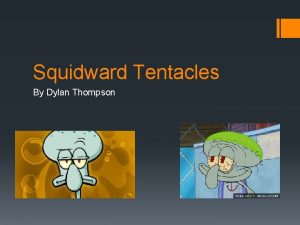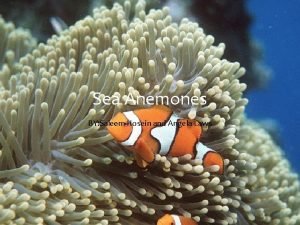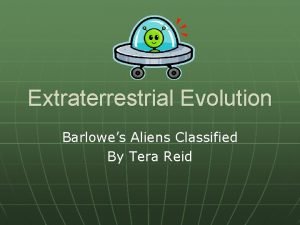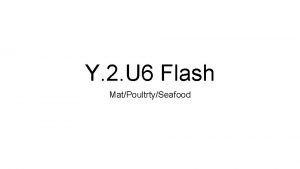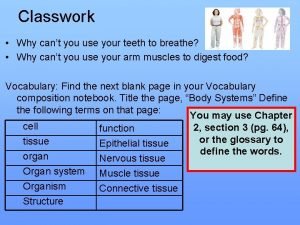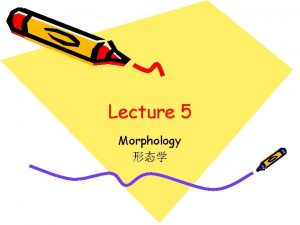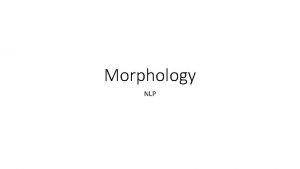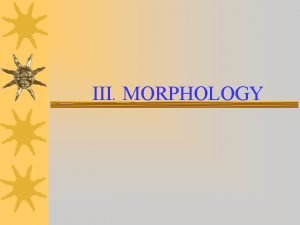Nautilus Morphology Head tentacles foot and hyponome organ








- Slides: 8

Nautilus Morphology • Head, tentacles, foot, and hyponome (organ that shoots jets of water to help it move) near the aperture of the body chamber. • Visceral mass containing other vital organs is situated to the rear of the body chamber. • Chambers of air help the nautilus move up and down and each chamber is separated by a sheet of calcite called a septum.

Nautilus Morphology

Squids • Can confuse predator by secreting clouds of ink from internal ink sacs. • Some can even eject a “dummy” ink that takes the rough form of its size and shape. • At least one known species of squid that lives below the photic zone produces a sparkling luminous ink. • Squid can grow very large. Giant squid have been recorded at lengths of almost 60 feet!.

Squid Reproduction • Sex and reproduction in cephalopods is in many ways quite different than in other molluscs. • First, sexes are separate and mating usually includes a courtship that often involves elaborate color changes. • This is followed by the transfer of a spermatophore (sperm packet) by a male to a female through her mantle opening. • Then a female lays the eggs.

Changing Color • Cephalopods have an amazing ability to change color very rapidly. • They use numerous pigment -filled bags, called chromatophores. • Chromatophores are found in the skin, and expand contract to reveal or conceal small dots of color. • Use for courtship, camouflage, communication, or as a warning to predators.

Squid Morphology • Squid have 10 tentacles • An internal ink sac/gland • Thin, internal shell • Beak for tearing flesh.

Octopuses • The most intelligent mollusk • About as smart as a puppy and with better eyesight. • Live in the intertidal and subtidal region of rocky coastlines. • Can memorize the location of hiding places, escape holes, and hunting locations • Octopuses in captivity have even been known to play with toys and recognize their keepers.

Octopus Morphology • 8 tentacles • Large brain • Note the beak and ink sac




